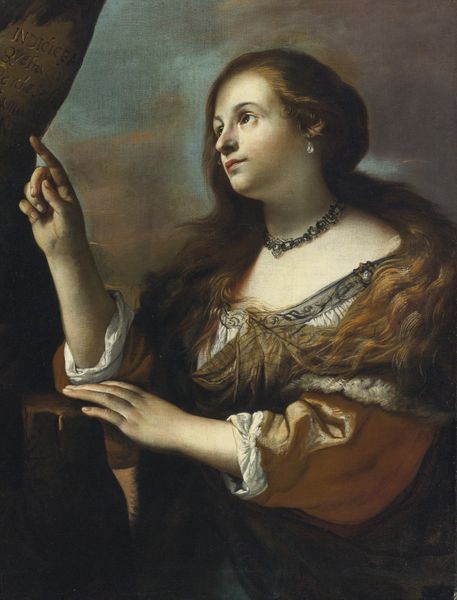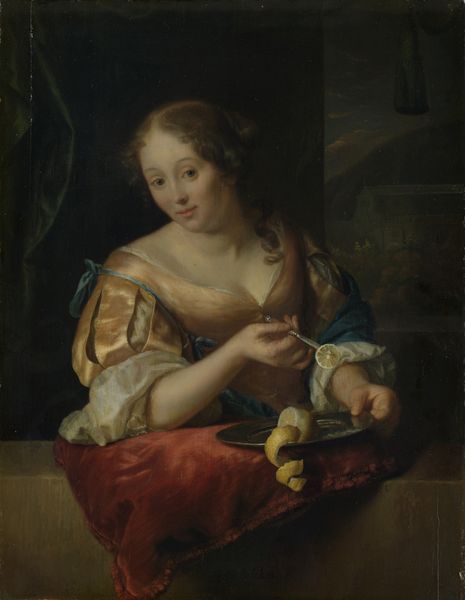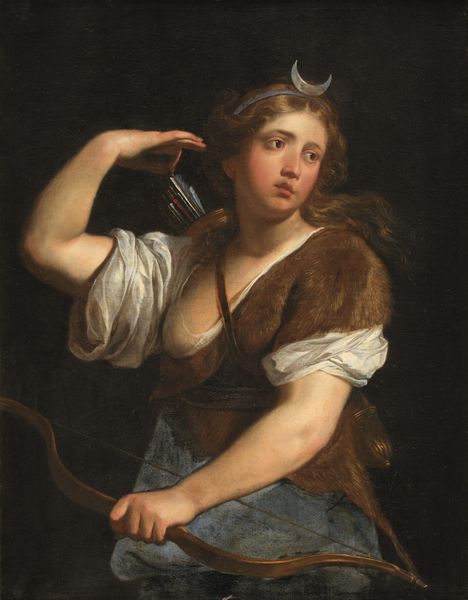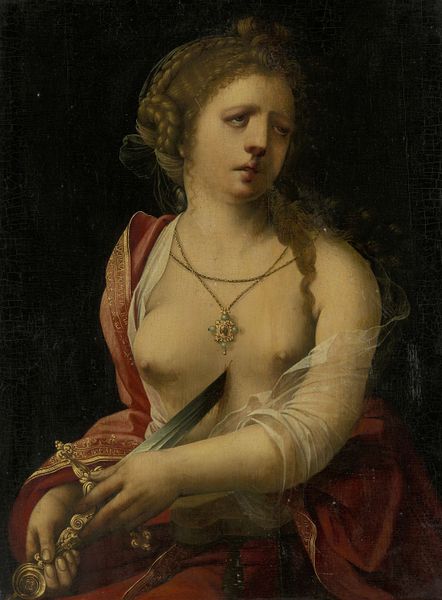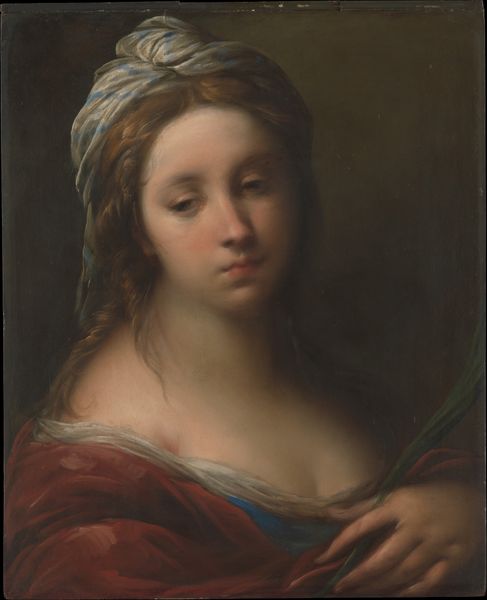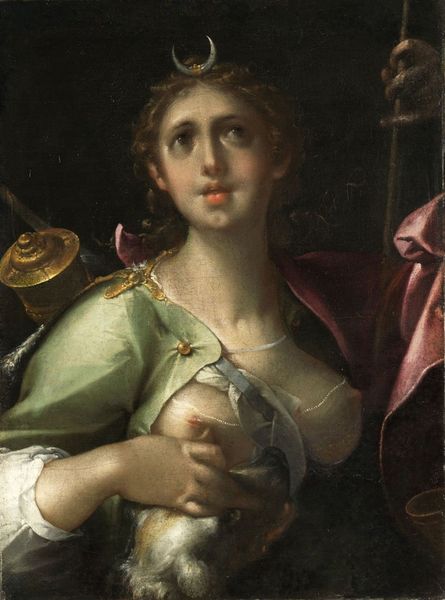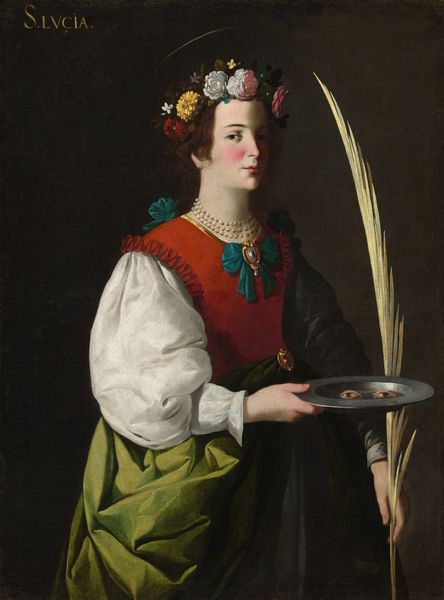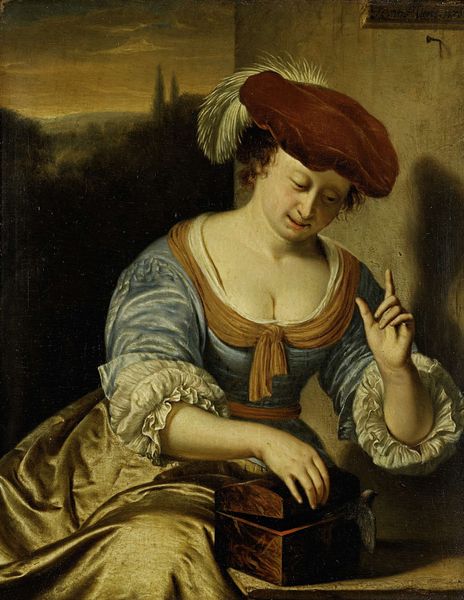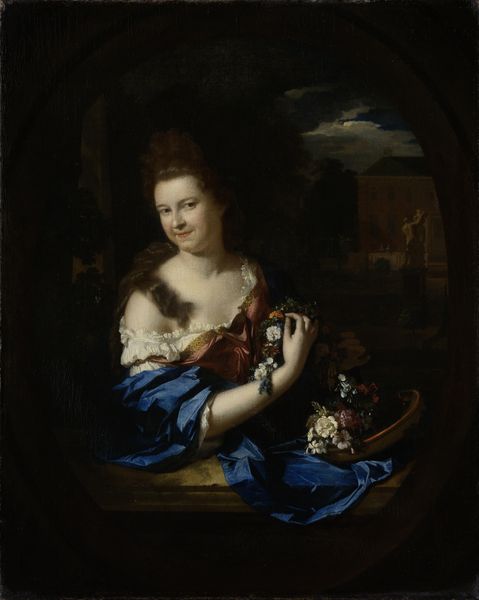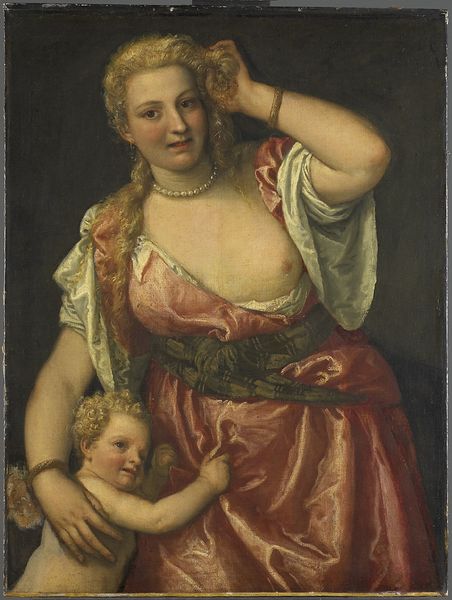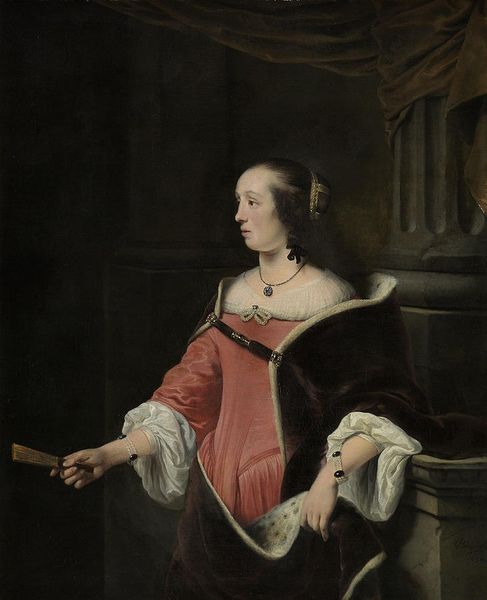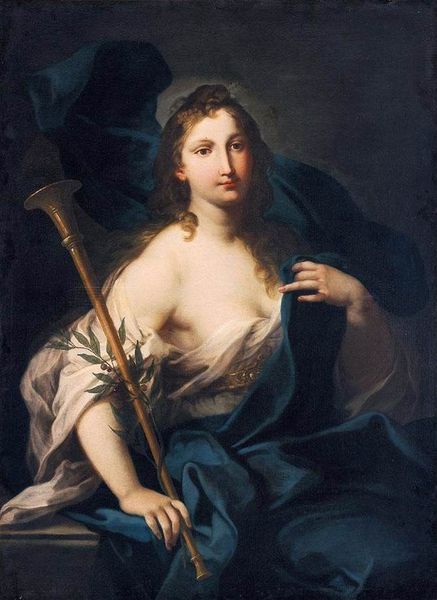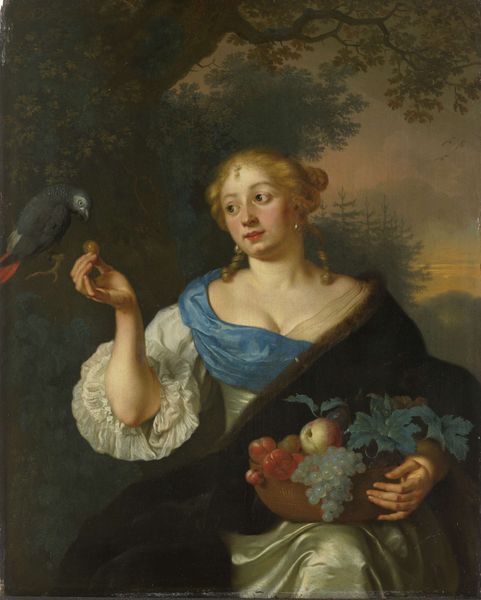
Dimensions: support height 81.5 cm, support width 64.5 cm
Copyright: Rijks Museum: Open Domain
Curator: Standing before us, we have "A Shepherdess" by Paulus Moreelse, painted around 1630, a striking example of Dutch Golden Age portraiture held here at the Rijksmuseum. Editor: My first impression is one of theatricality. The almost too-perfect contrapposto, the way the light catches on the golden fabric... she seems to be posing for us. Curator: Indeed. The 'shepherdess' motif in this period was less about rural labor and more a representation of pastoral idealism and perhaps even, through costuming and gesture, invoking classical or mythological figures. It raises the question: who is the audience and what message is being conveyed here? Editor: Absolutely. The shepherdess staff is clearly symbolic, and the flowers adorning her hair may have had a coded meaning within Dutch culture at that time—a secret language of flora that modern viewers might miss. Curator: The tension lies in interpreting what's overtly displayed versus what is intentionally masked, for instance, within that seemingly modest, but carefully rendered, décolletage. Moreelse places this figure within a very specific cultural framework – navigating representations of women and class at the time. We have to ask ourselves, what liberties are sanctioned in painting that wouldn't be in life, and how does the image comment, subvert, or reinforce normative patriarchal paradigms of the period? Editor: From a symbolical point of view, the unclosed robe represents that even though she has such great features as portrayed through the roses crown for beauty and fertility the opening acts as if there is something she desires yet unfulfilled. Maybe its not about sexual availability; but social capital? Curator: These genre scenes became increasingly popular due to socio-economic shifts in Holland at that time. This means this portrait can be read as commenting not just about social class, but the emergence of this thing we can identify today as modern celebrity. What do you think? Editor: Yes I concur completely. This work shows the rich texture of Dutch culture, especially given that those were times in the Golden Ages with huge economic inequalities in Holland. Curator: Ultimately, the piece reflects how art can become entangled in both celebrating and scrutinizing identity—be it personal or societal. Editor: A perfect convergence of symbol and statement!
Comments
rijksmuseum about 2 years ago
⋮
This alluring shepherdess would never have been engaged in the tending of sheep. She inhabits an idealized pastoral paradise called Arcadia. Dutch 17th-century poetry repeatedly sang the praises of this imaginary land. The shepherdesses there were invariably seductive and licentious. Moreelse made many attractive paintings of this subject matter.
Join the conversation
Join millions of artists and users on Artera today and experience the ultimate creative platform.
